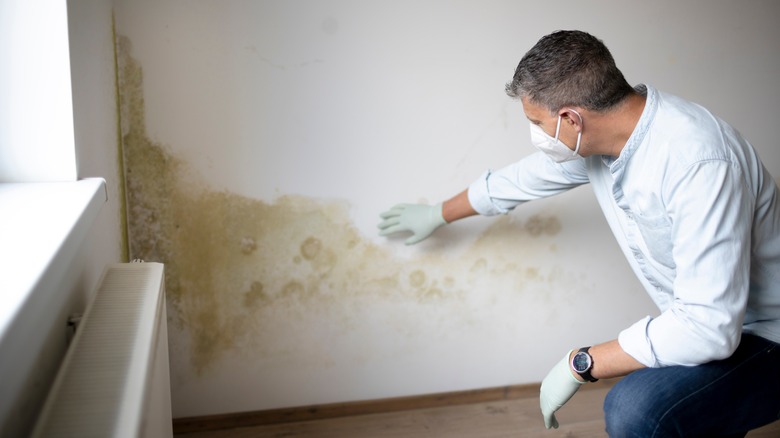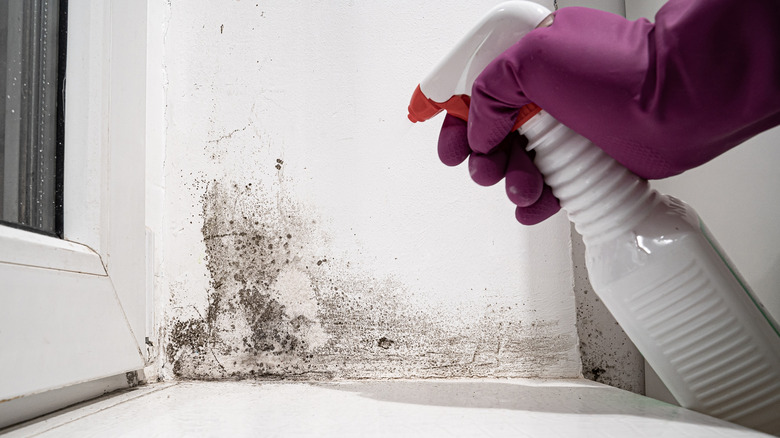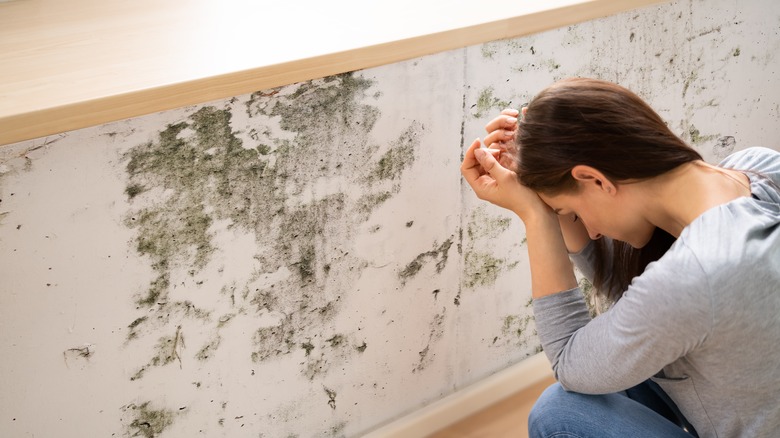Is It Safe To Use Rubbing Alcohol To Tackle Moldy Walls?
Regularly using easy ways to clean your interior walls is a good way to keep them looking great. However, sometimes, even regular cleaning can't stop mold formation, like if you have a leaky roof or unwanted moisture near the wall. Your normal cleaning processes may not work on mold, so what can you use? Will rubbing alcohol work on moldy walls, and is it safe to remove this substance on your own? Although rubbing alcohol can kill mold, you should be very careful about using it on your walls for a few reasons, including keeping yourself safe from illnesses related to mold spores.
The biggest concern is that you could have black mold on the walls, which differs from other species because it can be toxic. The more dangerous species often are black or green in color; although you can't determine what species you have just by sight, it must be tested.
If you end up trying to remove black mold on your own, you could expose yourself to a number of health problems. Some people have reactions similar to allergies when exposed to the spores of this material, including respiratory problems and rashes on the skin. Others have long-term health issues. However, not every person exposed to this substance will have problems. Regardless, use caution before disturbing it. Requesting help from a remediation company is usually the safest option.
Will rubbing alcohol damage the paint on your walls?
If you determine you don't have toxic black mold, you still may not want to use rubbing alcohol to kill the substance because of what it may do to the finish on the walls. Painted surfaces are among a few common places where you shouldn't use rubbing alcohol for cleaning, as are leather, wood, and granite.
Not every type of wall covering is susceptible to damage from rubbing alcohol. For example, if you have latex-based paint on your walls, the rubbing alcohol will often pull the material away, causing discoloration. However, if you have oil-based paint, you probably won't have any damage from cleaning the mold with it. Before trying this method of cleaning the mold, you should test it on a small, out-of-the-way section to see if it causes damage before using it on a larger area.
You also may need to repaint the wall after killing the infestation, so it doesn't matter if you damage it during remediation. Along those lines, never just paint over the mold, as this only temporarily hides the problem, and it is sure to return. Of course, if you have a significant mold problem, you may have to remove the section of drywall with the contamination.
Other concerns for using rubbing alcohol to kill mold
Before using rubbing alcohol to try to kill any mold you see on your walls, you should be aware of a few other potential problems with this process. First, you must use a product that has a high concentration of alcohol to be certain to kill the infestation. A diluted or weakened product may not be strong enough to kill it immediately, only weakening it, meaning it could grow back in the future.
Additionally, rubbing alcohol is a toxic substance for humans. It can cause headaches, nausea, and vomiting if you inhale it or ingest it. You should wear protective clothing, gloves, a mask or respirator, and eye protection when cleaning with it. However, you should also wear these protective items when working around mold anyway, so there's no need for extra protective gear. As another danger, rubbing alcohol is extremely flammable. If there is a high concentration of vapors in the air, it could be explosive, so never use it near open flames. Once it dries, it remains flammable, though it no longer emits vapors, reducing some risk.
Ultimately, because of all of these potential problems, the best solution is to hire a mold remediation company to take care of the issue safely and with the least amount of potential damage to your walls, home, and yourself while ensuring that it won't grow back.



